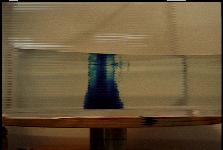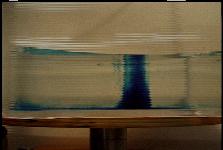

|
Ekman Pumping Experiment |
|
TIME (sec) __________ 0 19 32 122 234 |
EVENT _______ dye squirted in dye reaches bottom dye reaches sides dye at the surface again dye back in the interior |
| Below are several images from this experiment: | |

|
|

|
|

|
|
| A movie of this experiment is available. | |